When welcoming families to your classroom for the first time, a thoughtful kindergarten open house sets the perfect tone for the year ahead.
This special event provides parents with a unique insight into their child’s learning environment while helping little ones feel at ease in their new surroundings.
A good open house strikes a balance between information and fun. It shows parents what their children will learn and how they’ll teach them. It also gives kids a chance to show off “their” classroom with pride.
In this guide, we’ll share practical ideas to make your open house both meaningful and enjoyable. From student-led tours to parent resource packets, these tips will help you create a warm, welcoming event that builds excitement for the kindergarten year ahead.
Interactive Activities to Engage Parents and Kids
When welcoming families to your classroom for the first time, a thoughtful kindergarten open house sets the perfect tone for the year ahead.
This special event provides parents with a unique insight into their child’s learning environment, while helping little ones feel at ease in their new surroundings.
A well-organized open house strikes a balance between providing information and offering fun. It shows parents what their children will learn and how they’ll teach them. It also gives kids a chance to show off “their” classroom with pride.
Involving both parents and children makes open house events more memorable and enjoyable.
With the right mix of activities, you can create a warm and welcoming classroom atmosphere that showcases your teaching style while allowing families to connect with the learning environment.
Creative Kindergarten Open House Ideas
These creative open house ideas will not only help parents get to know your classroom better but also encourage their active participation in their child’s educational journey.
From interactive activities to thoughtful displays, these ideas will make the open house a fun and informative experience for everyone involved
1. Classroom Tour Led by Students
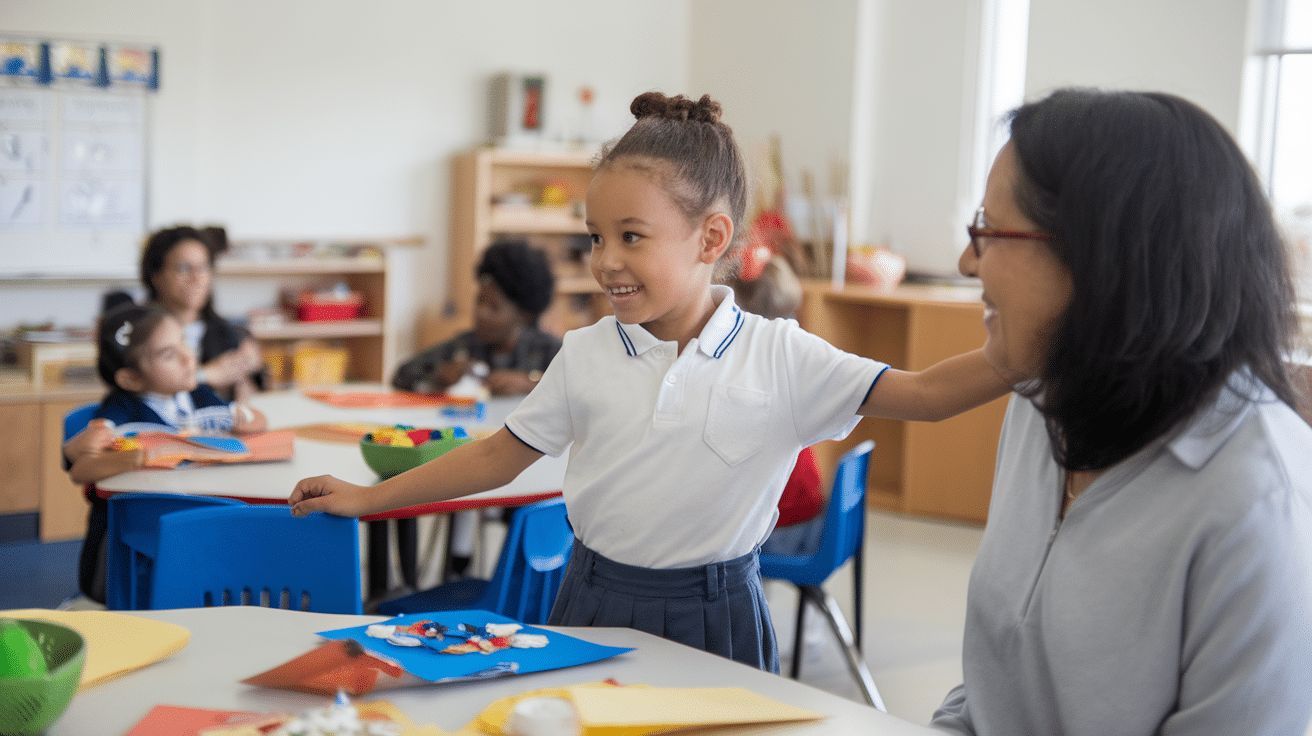
Let the children be the stars of the show by having them guide their parents around the classroom. Kids can point out their cubbies, favorite reading spots, and recent projects.
This gives students a sense of ownership over their space and helps parents see the classroom through their child’s eyes. Have simple talking points ready for students who might be shy.
2. “Guess Who?” Game
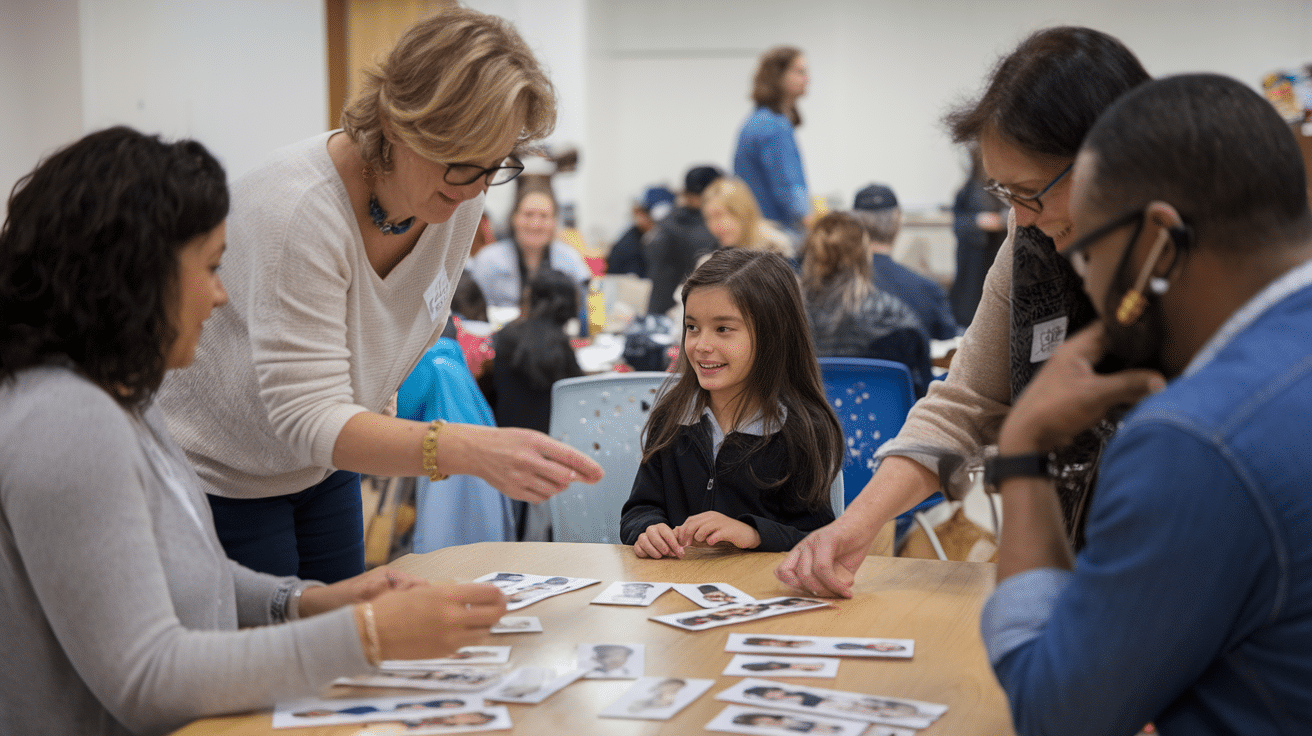
Create a sheet with fun facts about each student, without including their names. Parents can read the clues and try to figure out which description matches their child or their classmates.
Include simple details like “This student loves dinosaurs” or “This student can count to 100.” Place photos of all students on a board and let parents match the clues to the right picture.
3. Snack Station with Flipbooks
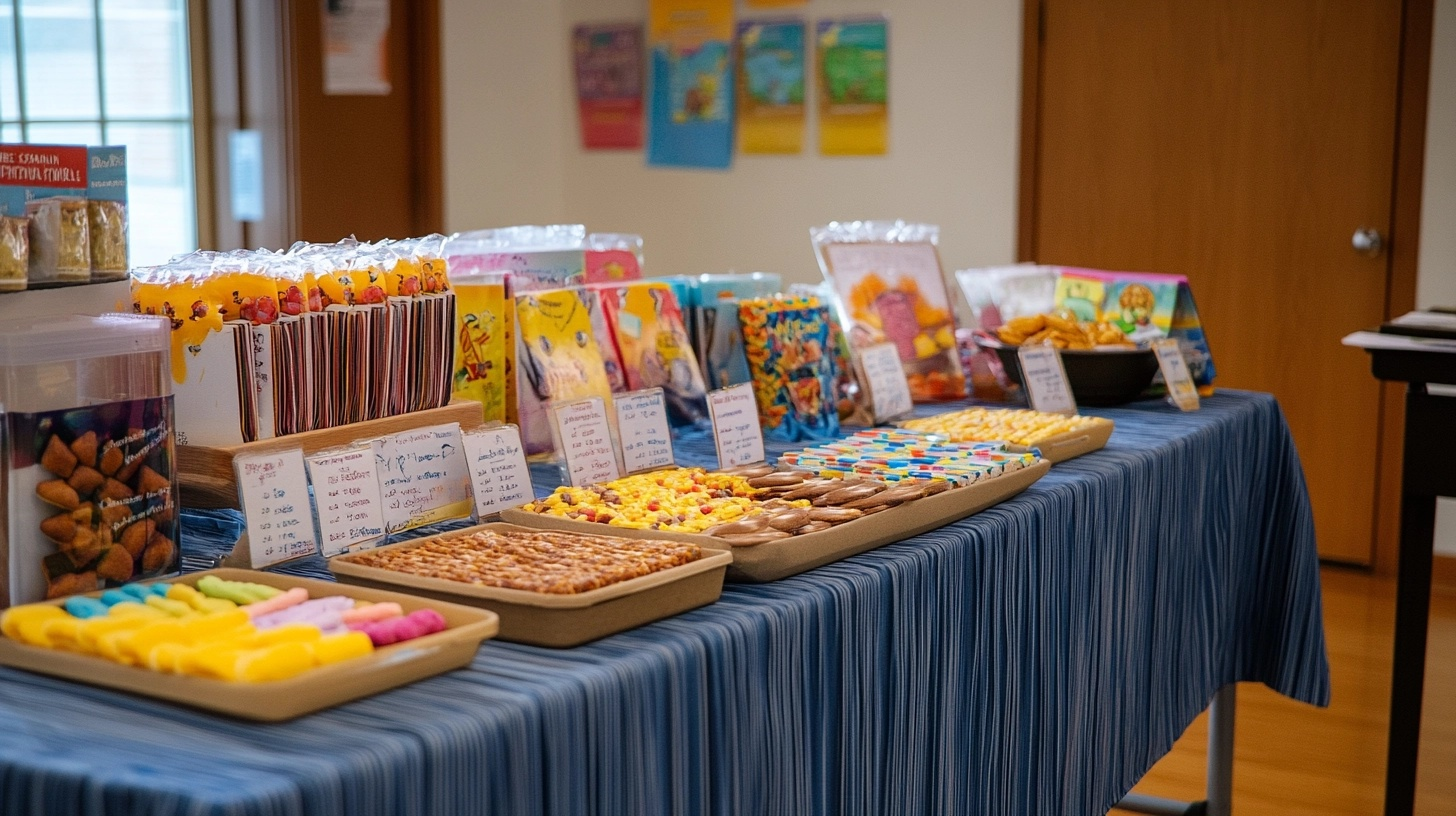
Set up a small refreshment area with simple snacks and drinks. Nearby, display flipbooks containing information about each student.
These flipbooks can include sample work, a self-portrait, and a short “About Me” section written by the student. Parents can enjoy a treat while learning about their child’s classmates and seeing their progress.
4. Interactive Parent Stations
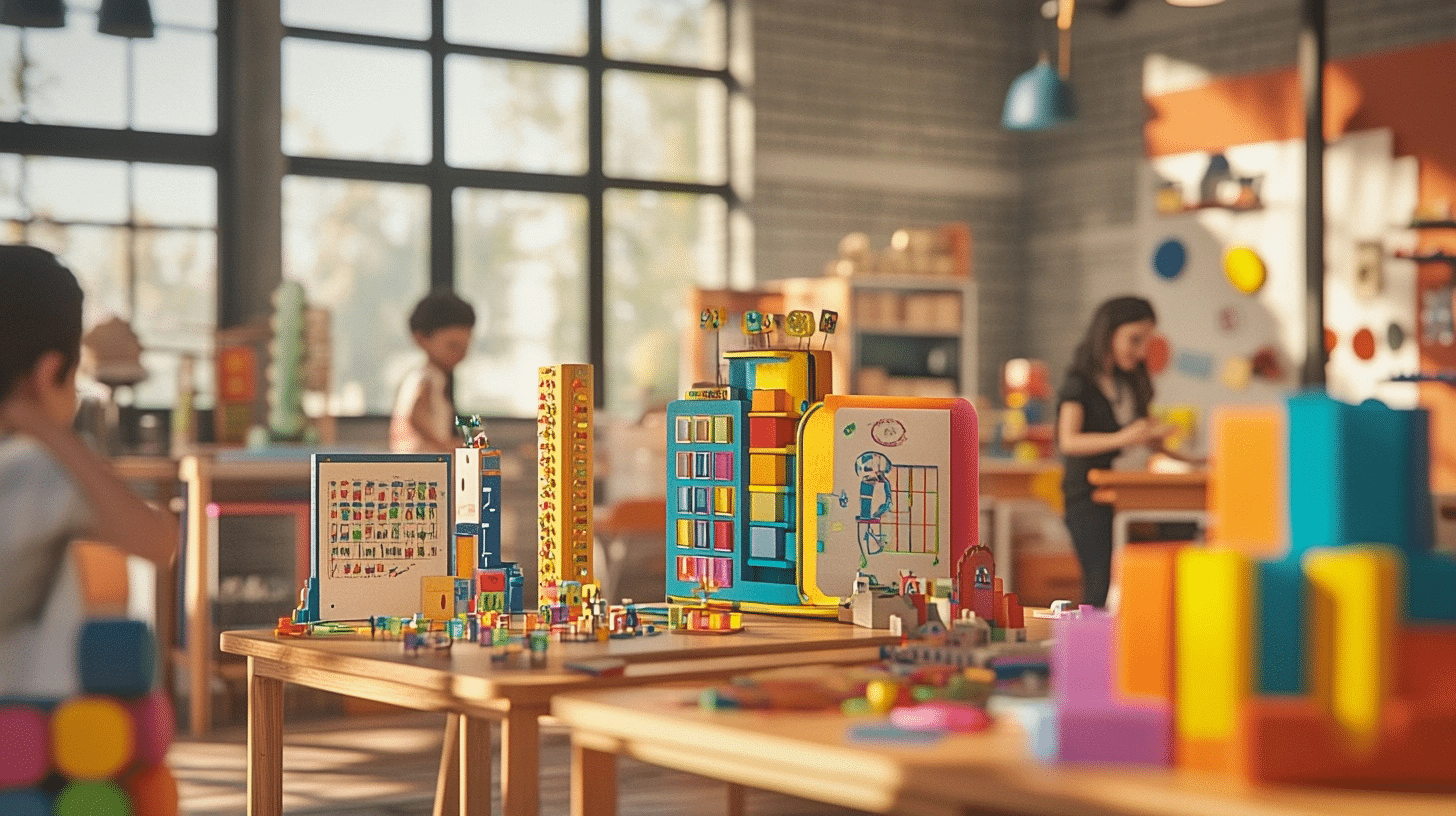
Create stations that mimic daily learning activities. Parents can try math manipulatives that their children use, practice a phonics game, or complete a simple art project.
Include clear instructions at each station and provide examples of how these activities support learning. This hands-on approach helps parents understand your teaching methods and gives them ideas for supporting learning at home.
Showcasing Student Work
Highlighting the children’s work makes them feel proud and helps parents see their child’s progress.
When families can view what students have created, they gain better insight into both their teaching approach and their child’s development in the classroom setting.
5. Student Art Gallery

Upgrade your classroom walls and bulletin boards into a mini art museum. Display children’s artwork with simple frames made from colored paper to make each piece stand out.
Consider organizing by themes or art techniques. Include brief notes explaining the skills practiced in each project, such as fine motor development or color mixing.
Leave space for parents to write positive comments on sticky notes next to their child’s creation.
6. Writing Displays
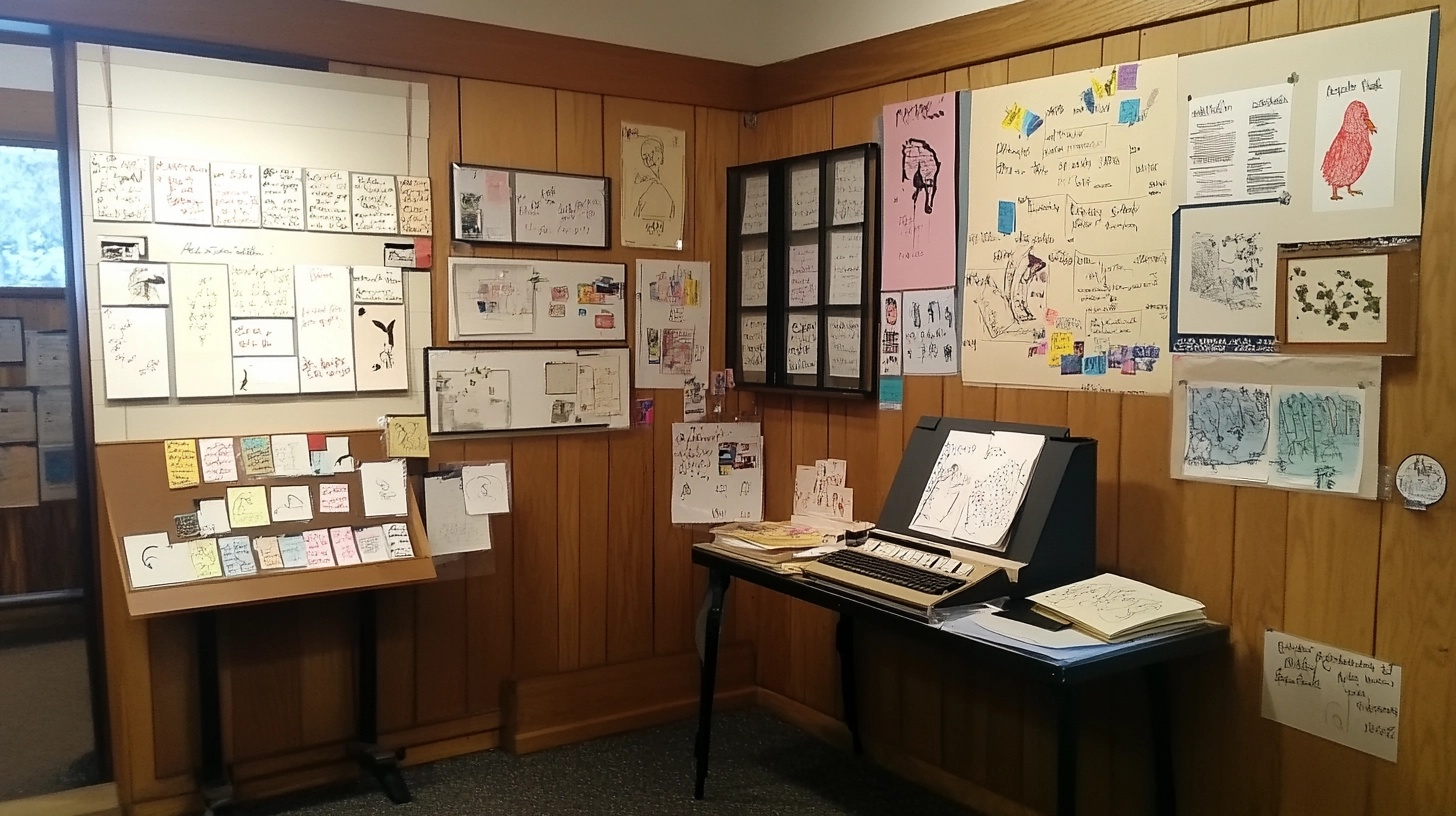
Share samples of student writing at various stages to show growth over time. Include early attempts at letter formation alongside more recent work.
For younger students, display dictated stories with their illustrations. Show writing from different activities, such as morning journal entries or responses to read-alouds.
Add small labels to explain the purpose of each writing exercise and the skills being developed.
7. Class Projects or Group Activities
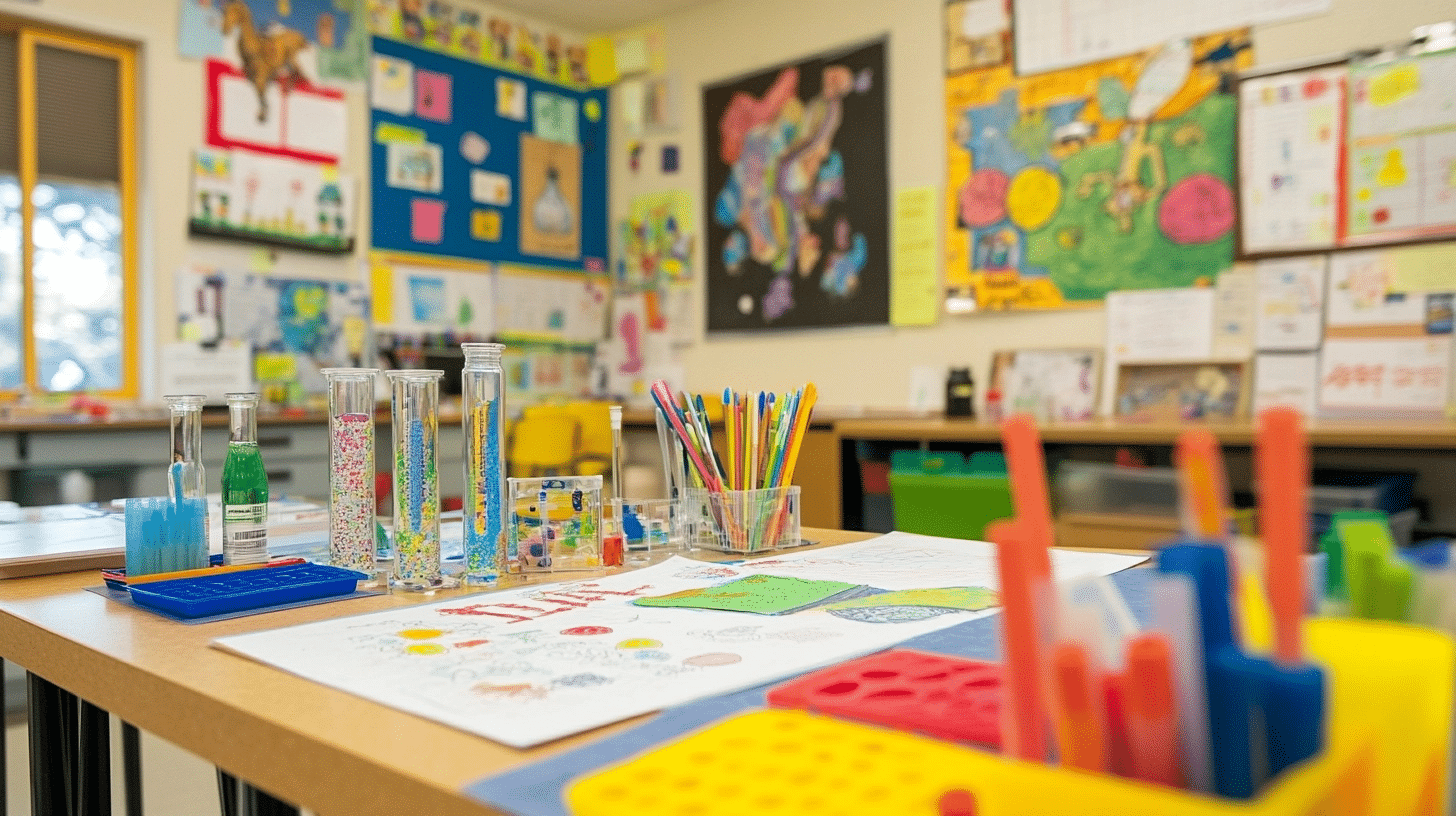
Set up tables or designated areas to showcase completed group projects. These might include collaborative storybooks, science experiments, or building challenges.
Use simple signs to explain the learning goals behind each project and how students worked together. Include photos of the children during the process of creating these projects to show engagement and teamwork.
This helps parents understand how group work builds both academic and social skills in the kindergarten setting.
Fun and Thematic Open House Ideas
Adding a unique theme to your open house can make it more exciting and engaging.
When you create a special atmosphere with thoughtful touches, both parents and students feel welcome and eager to explore the classroom environment. Themes help tie everything together while making the event feel special.
8. Themed Decorations

Decorate your classroom according to a seasonal or educational theme that connects to your curriculum. A space theme might include stars hanging from the ceiling and planet facts posted around the room.
An animal theme could feature different learning centers dedicated to various habitats. Nature themes complement plant displays and outdoor-inspired learning materials effectively.
Use simple items, such as colored tablecloths, themed name tags, and related books, to improve the theme without incurring excessive costs. Match your welcome signs and parent handouts to the theme for a complete look.
9. Scavenger Hunt
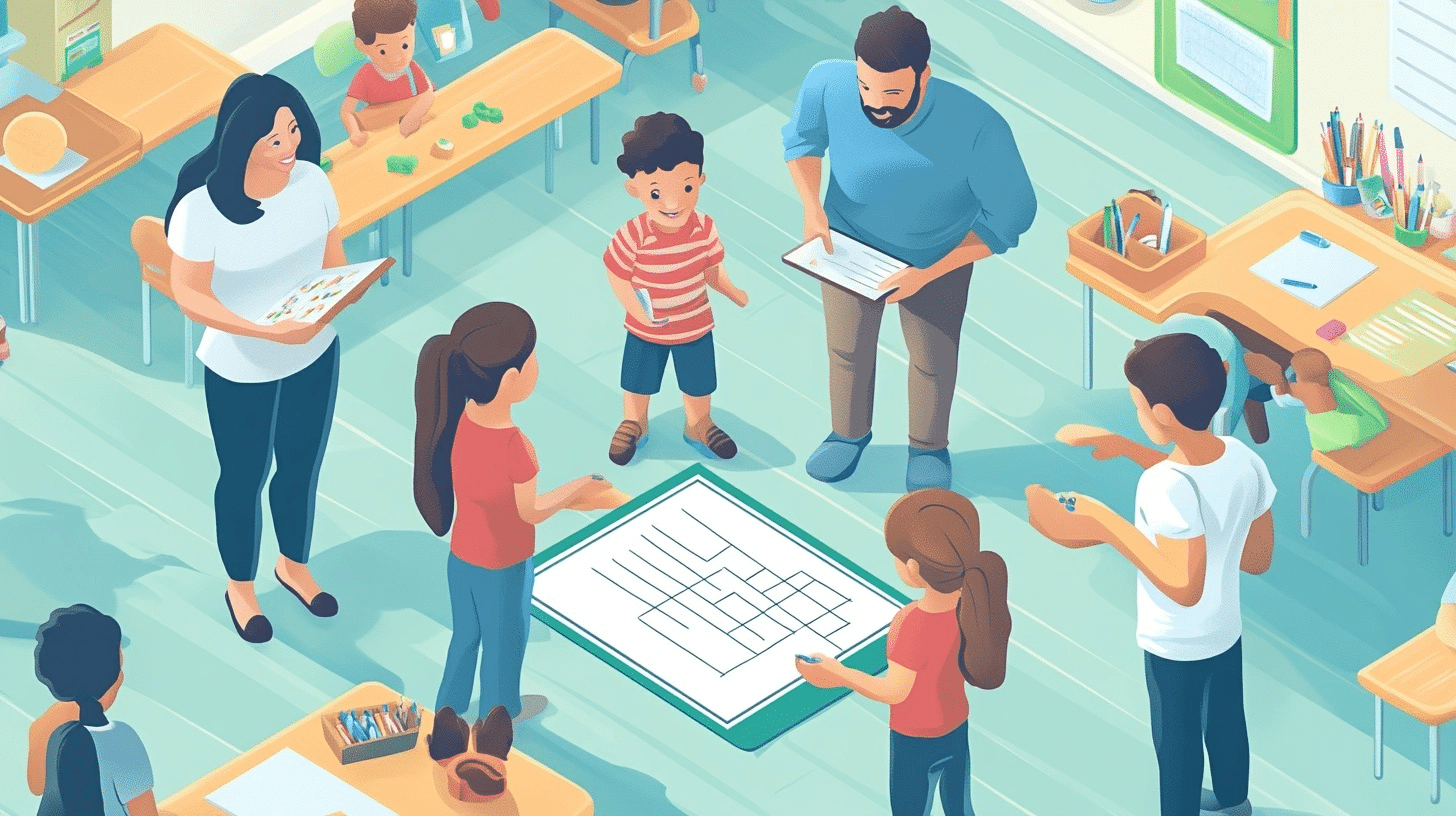
Organize a scavenger hunt that guides parents throughout the classroom and school. Create a simple checklist of items to find or activities to complete at different stations. Include tasks like “Find your child’s cubby,” “Locate the class calendar,” or “Visit the school library.”
This encourages families to explore beyond the main classroom space and learn about the entire school community.
Award small prizes or stickers when families complete their hunt. This activity helps break the ice for shy parents and ensures they don’t miss important areas of the classroom or school building.
Information and Resources for Parents
Provide parents with important information about the school year and their child’s educational journey. Clear communication from the outset establishes a strong foundation for collaboration throughout the year.
When parents feel informed and included, they can provide more effective support for their child’s learning at home.
10. Welcome Letters
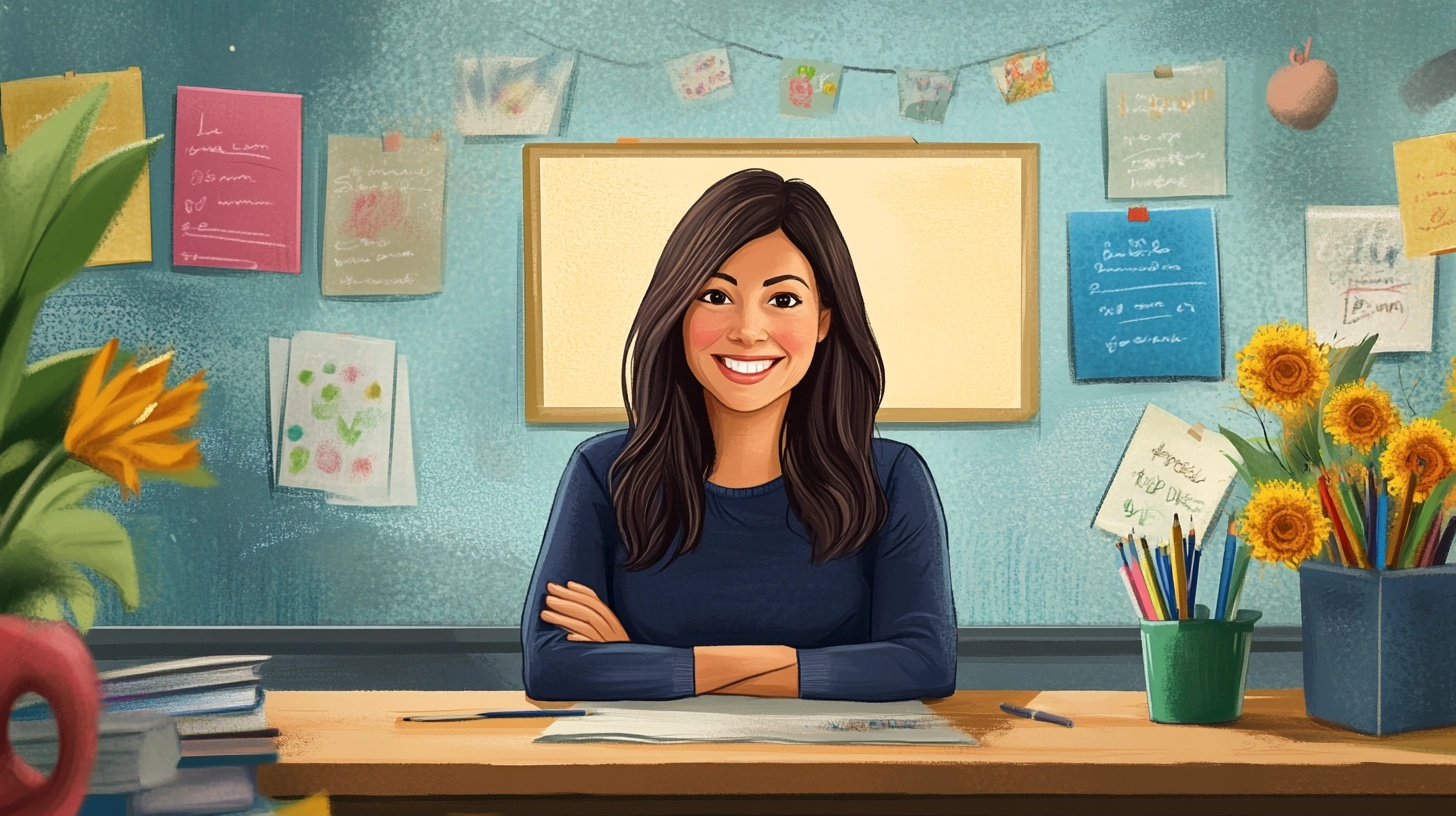
Prepare personalized welcome letters for each family that make them feel valued from the very beginning.
Include a warm greeting that mentions their child by name and expresses your excitement about having them in your class. Keep the tone friendly but professional. Share a brief overview of your teaching background and what parents can expect in kindergarten.
Add a photo of yourself to help families connect a face with your name. For families who speak languages other than English, try to provide translations of key points whenever possible.
11. Parent Packets
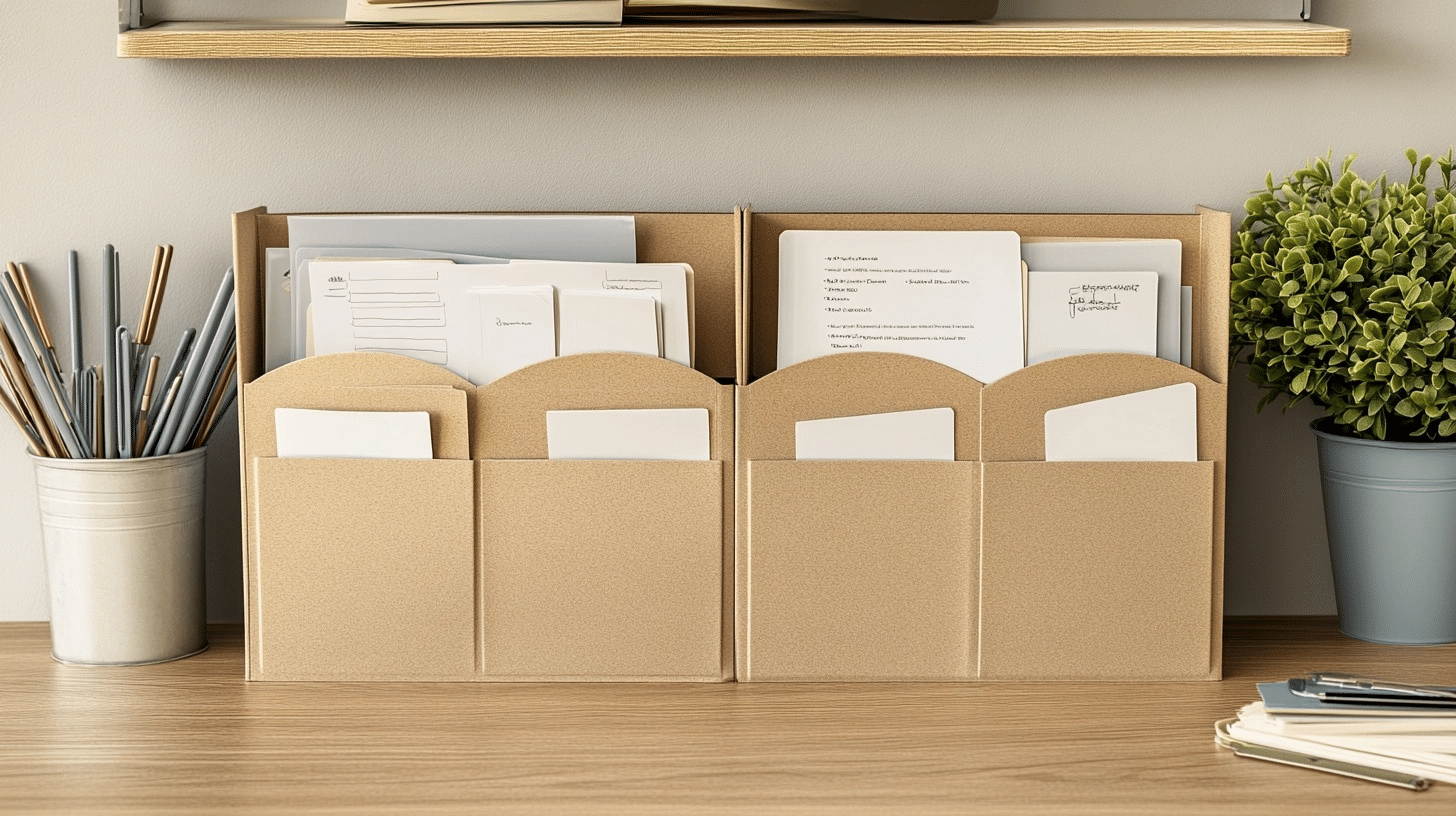
Provide a well-organized packet that families can reference throughout the year. Use colorful folders with clearly labeled sections for different types of information.
Include a yearly calendar highlighting important school events, breaks, and conference dates. Add a list of classroom supplies children will need and when they should bring them.
Include a simple explanation of daily routines and your classroom management approach. Please provide your contact information, including your preferred methods of communication, as well as the best times to reach you.
12. Volunteer Sign-Up Sheets
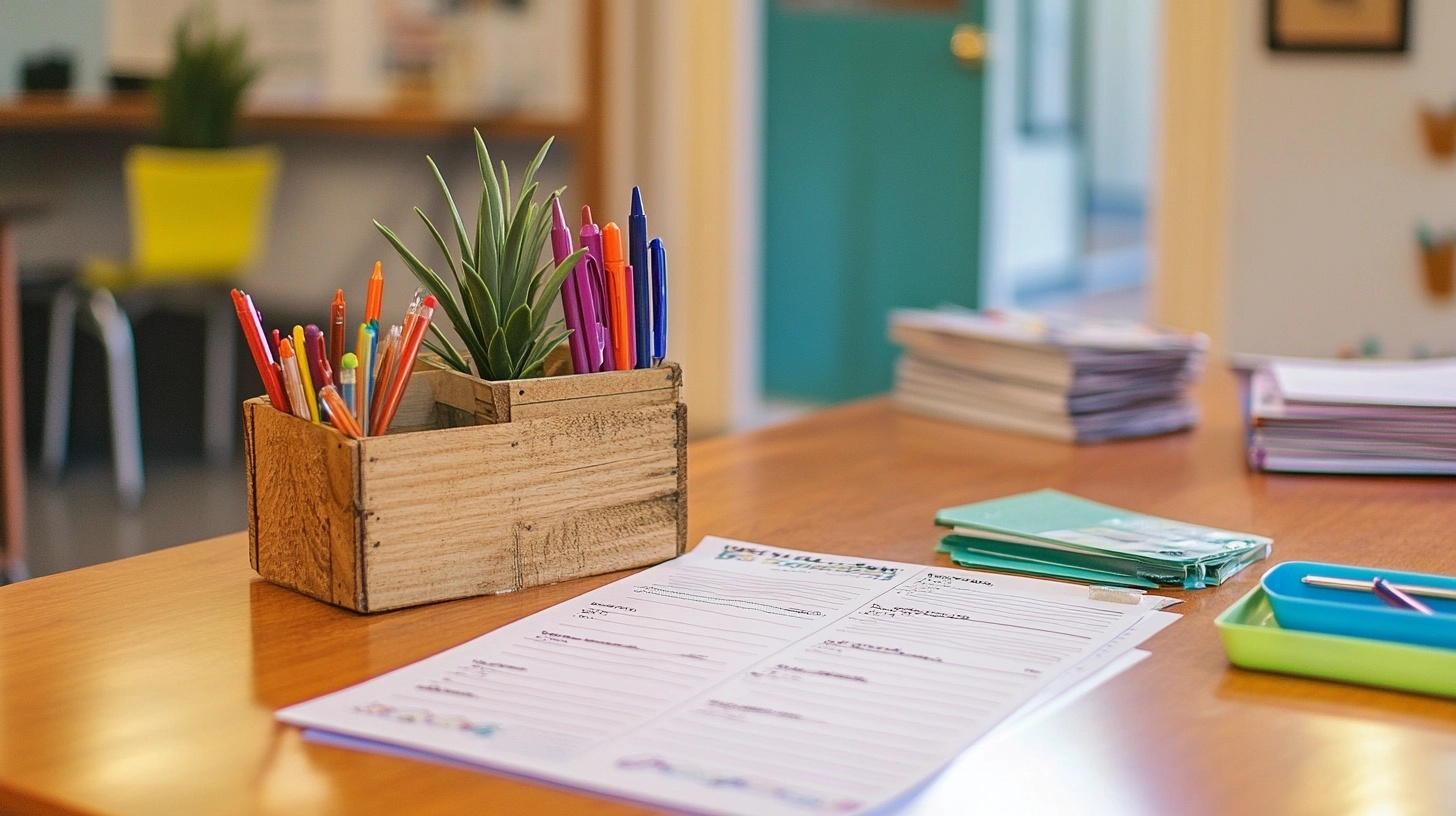
Create a chart that illustrates the various volunteer needs throughout the year, ranging from one-time events to weekly assistance with reading groups.
Include both in-classroom options and tasks that can be done from home for working parents. Use simple sign-up forms with clear descriptions of what each role involves and the time commitment needed.
Let parents know how valuable their involvement is to both their child and the classroom community. Have pens readily available and leave space for parents to note any special skills they might want to share with the class.
Creating a Relaxed and Welcoming Environment
An open house should be a relaxed, informal event where parents can comfortably interact with teachers and staff.
The atmosphere you create sets the tone for your classroom community and helps families feel at ease.
Casual Meet and Greet
Provide an opportunity for parents to meet with you and other families casually. Set up a small sitting area with comfortable chairs for conversations.
Have name tags ready and use simple conversation starter cards on tables to help families connect. Position yourself near the door to welcome each family personally, making sure to greet children at their eye level.
Music and Soft Lighting
Use gentle background music and soft lighting to create a welcoming atmosphere. Choose calm instrumental music that’s quiet enough for conversation.
Consider using table lamps or string lights instead of harsh overhead fluorescents. Add a few plants around the room to bring warmth to the space.
Refreshments
Provide simple, mess-free snacks and drinks for both parents and kids. Set up a small refreshment table with water bottles, juice boxes, and small treats.
Consider having students help prepare simple snacks during class time to share at the event. Remember to account for food allergies and provide options for everyone.
Conclusion
A well-planned kindergarten open house creates lasting first impressions for families and sets the tone for the school year.
By combining student showcases, interactive activities, helpful resources, and a warm atmosphere, you’ll help parents and children feel excited about the classroom journey ahead.
Select the ideas that best suit your specific classroom, student group, and teaching approach. Not every suggestion will fit your space or style, and that’s perfectly fine. The most important thing is creating a meaningful experience that builds connections.
What’s your favorite open house activity? Let us know in the comments or share your ideas with us! Your creative kindergarten open house ideas might be just what another teacher needs to make their event special.
Frequently Asked Questions
What should teachers do at an open house?
Teachers should welcome families, share classroom information, showcase student work, explain daily routines, and offer ways parents can support learning at home.
How can I showcase my students’ work during an open house?
Create labeled displays of art projects, writing samples, and group work that showcase student growth and align with classroom learning objectives.
What should parents expect from a kindergarten open house?
Parents can expect to tour the classroom, meet the teacher, learn about routines and curriculum, and learn how they can support their child’s learning.




